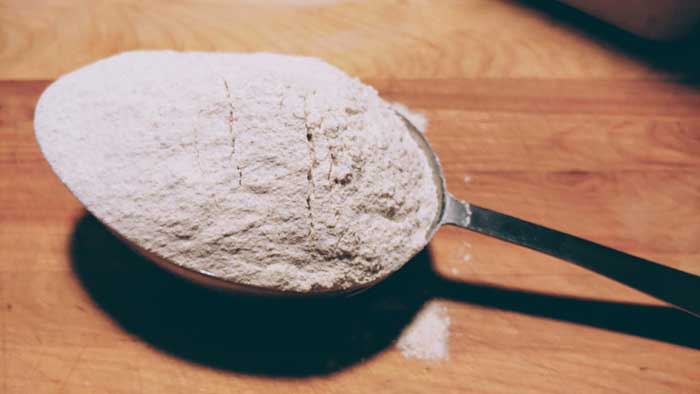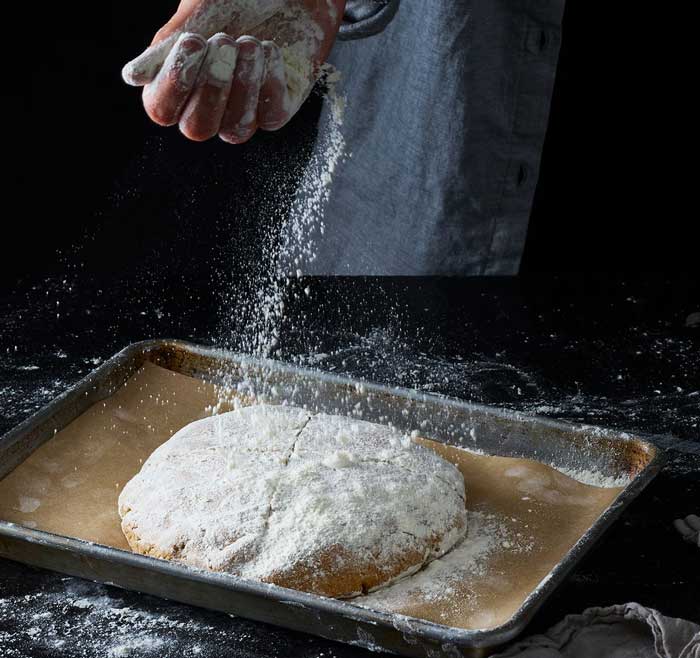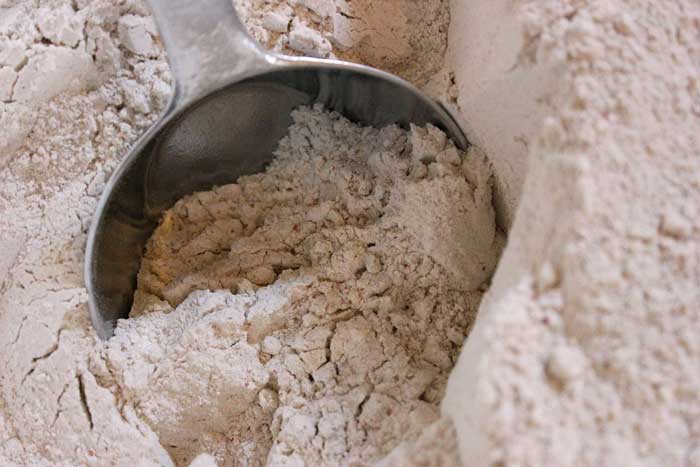Different flours bring different flavor, texture, and nutrition to the table. Similarly, baking with different kinds of them needs special tips and tricks. Many bakers seem to struggle with understanding the structure and characteristics of ingredients at first.
But with experience and proper techniques, anyone can master the art of baking with any type of ingredient. Therefore, today we’ve compiled all the tips, tricks, and the actual process for baking with whole wheat flour!
Whole Wheat Flour and Its Characteristics
Whole wheat flour is made from the wheat berry of hard red wheat. This has more nutrients than most others. It has natural fiber, zinc, magnesium, potassium at a good amount.
Although people who are allergic to gluten avoid it, all these nutrients can give your digestive system a boost and make your recipes healthier. It gives baked items a nutty flavor and browner color. And it is known for the high amount of protein and gluten.

Due to which it creates a strong and hard gluten structure. However, the gluten can also turn food into dense, dry, and hard textured, which bakers try to avoid. It also absorbs liquid quickly; then it makes the dough heavy.
Due to which the item can’t rise on its own. As a result, your baked item can lose it’s airy, fluffy texture. This is why you need to be extra careful while handling whole wheat flour.
Worry not, we are here to help you with it! Let’s have a look at the steps for baking with whole wheat flour:
1. Controlling the Texture
You can actually control the result of your food using the accurate proportion and amount. If you want to bake items that are hard and dense, you can add at least half the amount of all-purpose flour with whole wheat. In the case of pizza dough and bread from 50% to 100% all-purpose flour can work.
Then mix with regular whole wheat. On the other hand, if you want your items to be soft and moist, mix the regular whole wheat with whole wheat pastry flour. The amount should be 50% of both kinds. What happens here is that the pastry flour contains less gluten and protein, which makes the texture airy.
2. Less Is More
Most of the bakers struggle with the amount they need to use. Since whole wheat is very dense textured flour, you don’t need to use it as much as regular white flours. Using less creates more airy and tender food. So swap 1 cup of white flour with ¾ cup of whole wheat.
This will give you the same result with less amount of flour. Remember, this tip works for certain baking items like tarts, pie crusts, cookies, etc. For bread and pizza dough, you can follow the regular amount. Use less whole wheat, which means more time and money to invest in other baking products!
3. Mixing without Worrying
If you have been baking for a while now, you know that mixing can affect the texture. Usually, mixing the flour makes the gluten expand the bubbles inside the dough. Over mixing the flour makes the elasticity lose for which it might not rise as much.

But that happens only in white bleached flour. In the case of whole wheat, no matter how much you mix, it doesn’t affect the elasticity! Surprising right? What happens here is that the gluten gets cut down by the bran. So when you overmix, it makes the cake or bread airy and tender. The more you mix the moist, your item will be.
4. Let the Batter Sit
This is a tricky part. Whenever you are baking with whole wheat, make sure always to let the batter hydrate. We mentioned earlier that whole wheat usually absorbs the liquid and makes texture dry. It happens because of the presence of bran and germ in it.
The bran and germ are pretty rough-textured. It takes time to hydrate and soften them. When you rest the batter before baking, it softens the bran and germs, which makes the dough softer.
5. More About Hydrating
Forgot to hydrate before baking? Happens, don’t worry. Turns out, you can also let it hydrate after baking! If you let your item rest overnight after baking, it gives you the same result as hydrating before baking.
All you have to do is take out the item, let it rest for a long time. Serve it the day after. This will give you a moist and soft pastry. Timing doesn’t matter, hydration does.
6. Hydrate with Liquids
Since the batter needs hydration, another way to hydrate the bran and germ is by adding more liquids. This flour needs more liquid than others. How much more? For each cup, try to add one or two tablespoons of liquid. You can use water, milk, or even orange juice.

That gives your food a slight orange flavor and sweeter taste. After adding the first batch of liquid, let it hydrate and see how much it has absorbed. Then add the next batch. Keep doing it until you’ve reached your preferred texture. Moreover, keep in mind it takes a little while to absorb the water, so give it some time to rest.
7. Testing Hack
If you aren’t sure about the amount of liquid to use, you can try this hack. Split your batter into two batches. Bake the first batch first while the other one rests and absorbs more. After that, bake the second part. This way, you’ll be able to predict how much liquid you need.
8. Leaving Uncovered
Although you need to keep most of your baked items covered, not this time, leaving your food uncovered can actually help at this time. It helps the food get cold and absorb even more liquids overnight.
But this is only applicable when you are baking bars. Leaving them open helps the bran and germ to get softer and create moisture. The next day you’ll get a softer texture.
9. Storage and Date
Storing the whole wheat flour properly can make it last longer. Usually, it can last for about 3-4 months at a normal temperature. Once you open the package, make sure to keep it in an air tightened box.
So the oil-rich germ doesn’t get rotten. You can also keep it in a plastic package that can be sealed and keep it in the freezer.
Be extra careful while buying it for the same reason. A lot of times, the flour isn’t stored properly, and can’t be found in the best quality. Make sure to check the expiry date while you buy it.
Conclusion
Baking with whole wheat flour gives you more control over the result and also rich nutrients for your health. For this reason, it has become a popular choice among customers. As a baker, it can seem quite intimidating at first to handle different flours.
But knowing the proper tips is the key. It can improve your baking skill and taste of your food. You can also try to enrich your knowledge of whole grain flour. So stop worrying about the flour and start trying our tips and see the improvement next time you bake with whole wheat flour!

